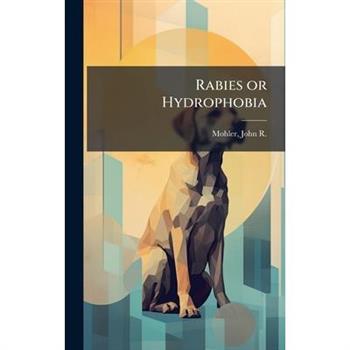Plumb’s Veterinary Drug Handbook
Plumb's(TM) VETERINARY DRUG HANDBOOK Find drug dosages and other critical information for prescribing drugs to animals quickly and efficiently in this fully updated new edition of this must-have veterinary resource The Tenth Edition of Plumb's(R) Veterinary Drug Handbook updates the most comprehensive, detailed, and trusted source of drug information relevant to veterinary medicine. Covering dosages, drug interactions, adverse effects, and contraindications, among other key drug details, this bestselling book is a must for practicing veterinarians and anyone requiring reliable information on the use of drugs in animals. Designed for ease of use, the book surveys an exhaustive list of drugs with applications for a wide variety of species, including dogs, cats, birds, small mammals, and farm animals. This edition includes updates to all 738 drug monographs and adds 30 new monographs, including 9 new insulin monographs, to its exhaustive coverage of drugs used in the care of animals. This new edition: Provides an extensively reviewed and updated version of the must-have veterinary drug reference Includes 30 new drug monographs, including 9 new insulin monographs Updates all 738 drug monographs, with robust citing of new information Covers a wide variety of species, including dogs, cats, birds, small mammals, and farm animals Presents detailed dosing information for an exhaustive list of drugs used in animals Plumb's(R) exhaustive coverage of drugs relevant to the veterinary field makes this book an essential reference for veterinarians, veterinary technicians, veterinary pharmacologists, pharmacists with veterinary patients, and libraries that serve these groups.
Diary of a Zoo Vet
Immerse yourself in the world of a passionate veterinarian, and discover the fascinating behind-the-scenes of a zoo. Working as a vet in a large zoo is a dream job for many--but for Tim Bouts, it's reality. As Chief Veterinary Officer, he has spent over 20 years caring for animals in world-renowned parks like London Zoo. Today, he works at the Sheikh of Qatar's 'Panda House.' In this book, he shares remarkable stories from his diverse range of patients: a lion battling Covid, a hippopotamus with tuberculosis, a tigress with dental issues, and a gorilla suffering from chronic pain. Some of his anecdotes are heartwarming, like his first successful surgery, or welcoming baby pandas to Pairi Daiza in Belgium. Others are pulse-pounding, such as the failed anesthesia of an antelope, and the escape of two chimpanzees. And some are deeply moving, like the euthanasia of a herd of herpes-stricken elephants or the heartbreaking loss of a walrus mother and her calf. Through these stories, you'll get a front-row seat to Tim's daily work and a rare glimpse into his thoughts. He doesn't shy away from sensitive topics like euthanasia, contraception in zoos, and the challenges of quarantining animals.
Path to Pet Wellness
Path to Pet Wellness is an enlightening guide for pet parents seeking a spiritual connection with their beloved animal companions through a "whole-istic" approach to animal care.This informative guidebook introduces pet lovers to the concept that physical symptoms are more than just signs of illness--they are messages from the body, revealing the flow of energy and the deep connection to spirit. By focusing on optimizing BEAM (Behavior, Energy, Appetite, and Mood) and enhancing the overall quality of life, this guide encourages a shift away from limiting beliefs about symptoms, diseases, and diagnoses that often hinder happiness and health. Instead, it advocates for a more conscious, heart-centered approach to pet parenting, integrating the power of love as a healing energy.Path to Pet Wellness is part of the growing movement toward Animal-Centered Treatments (ACT), aiming to restore the spiritual essence to holistic veterinary medicine and empower pet guardians to nurture their animals with deeper awareness and compassion.
Australian Mammals
Australian Mammals: Biology and Captive Management is a complete guide to the husbandry of all groups of Australian mammals. This second edition has been updated based on the latest research, bringing together current knowledge of the biology and behaviour of each species in captive situations and providing guidance for hand rearing. It covers advances from the last 20 years, including developments in assisted breeding, genetic techniques, updated taxonomy and the importance of Australian mammal welfare, both physical and mental.Written in collaboration with experts in captive management, ecology and veterinary science, chapters are presented for each taxonomic group of Australian mammals. Each chapter covers animal welfare, natural history, housing requirements, general husbandry, feeding requirements, handling and transport, health requirements, behaviour, breeding and artificial rearing.Australian Mammals provides practical guidance for zookeepers, veterinarians, zoologists, researchers and students.
Dadd's Theory and Practice of Veterinary Medicine and Surgery
"Dadd's Theory and Practice of Veterinary Medicine and Surgery" by George H. Dadd, originally published in 1867, offers a comprehensive look into the veterinary practices of the mid-19th century. This historical text provides insights into the diagnosis, treatment, and surgical procedures used on animals during this era. It covers a wide range of topics related to animal health, including diseases affecting various species, and reflects the state of veterinary knowledge at the time. This book is a valuable resource for historians of medicine, veterinary practitioners, and anyone interested in the evolution of animal care. It offers a unique glimpse into the challenges and innovations in veterinary science during a period of significant change. Dadd's work stands as a testament to the enduring quest for improving the health and well-being of animals.This work has been selected by scholars as being culturally important, and is part of the knowledge base of civilization as we know it. This work was reproduced from the original artifact, and remains as true to the original work as possible. Therefore, you will see the original copyright references, library stamps (as most of these works have been housed in our most important libraries around the world), and other notations in the work.This work is in the public domain in the United States of America, and possibly other nations. Within the United States, you may freely copy and distribute this work, as no entity (individual or corporate) has a copyright on the body of the work.As a reproduction of a historical artifact, this work may contain missing or blurred pages, poor pictures, errant marks, etc. Scholars believe, and we concur, that this work is important enough to be preserved, reproduced, and made generally available to the public. We appreciate your support of the preservation process, and thank you for being an important part of keeping this knowledge alive and relevant.
Profesor E. J. Donecken's System and Illustrated Treatise on the Most Obvious and Complicated Diseases and Blemishes to Which the Equine Family is Peculiarly Subject ... With ..
"Profesor E. J. Donecken's System and Illustrated Treatise on the Most Obvious and Complicated Diseases and Blemishes to Which the Equine Family is Peculiarly Subject" offers a comprehensive look into the health and ailments affecting horses during the late 19th century. Penned by E J. Donecken, this treatise provides detailed insights into the diagnosis and treatment of various equine conditions prevalent at the time. This historical work serves as a valuable resource for understanding the evolution of veterinary practices and the specific challenges faced by horse owners and practitioners in the past. With detailed descriptions and potential illustrations (as suggested by the title), the book offers a glimpse into the state of equine medicine during this era, making it a fascinating read for historians, veterinary professionals, and anyone interested in the history of animal care.This work has been selected by scholars as being culturally important, and is part of the knowledge base of civilization as we know it. This work was reproduced from the original artifact, and remains as true to the original work as possible. Therefore, you will see the original copyright references, library stamps (as most of these works have been housed in our most important libraries around the world), and other notations in the work.This work is in the public domain in the United States of America, and possibly other nations. Within the United States, you may freely copy and distribute this work, as no entity (individual or corporate) has a copyright on the body of the work.As a reproduction of a historical artifact, this work may contain missing or blurred pages, poor pictures, errant marks, etc. Scholars believe, and we concur, that this work is important enough to be preserved, reproduced, and made generally available to the public. We appreciate your support of the preservation process, and thank you for being an important part of keeping this knowledge alive and relevant.
Treatise On Veterinary Medicine
"Treatise On Veterinary Medicine" by James White is a comprehensive guide to the health and care of animals. This book offers detailed insights into the medical practices and knowledge essential for veterinary surgeons. It covers a range of topics related to animal diseases, treatments, and overall well-being, reflecting the state of veterinary science at the time of its writing.This treatise is invaluable for anyone studying animal health, or for those interested in the historical practices of veterinary medicine. Its detailed observations and practical advice make it a significant contribution to the field. This work has been selected by scholars as being culturally important, and is part of the knowledge base of civilization as we know it. This work was reproduced from the original artifact, and remains as true to the original work as possible. Therefore, you will see the original copyright references, library stamps (as most of these works have been housed in our most important libraries around the world), and other notations in the work.This work is in the public domain in the United States of America, and possibly other nations. Within the United States, you may freely copy and distribute this work, as no entity (individual or corporate) has a copyright on the body of the work.As a reproduction of a historical artifact, this work may contain missing or blurred pages, poor pictures, errant marks, etc. Scholars believe, and we concur, that this work is important enough to be preserved, reproduced, and made generally available to the public. We appreciate your support of the preservation process, and thank you for being an important part of keeping this knowledge alive and relevant.
A Manual of Homoeopathic Veterinary Practice;
"A Manual of Homoeopathic Veterinary Practice" by Boericke & Tafel, originally published in 1873, offers a fascinating glimpse into the world of alternative veterinary medicine in the late 19th century. This comprehensive manual details the principles and practices of homoeopathy as applied to the treatment of animals. It provides detailed guidance on diagnosing and treating various ailments in livestock and pets, using homoeopathic remedies. This historical text is invaluable for those interested in the history of veterinary medicine, the evolution of homoeopathic practices, and alternative approaches to animal care. It provides insights into the medical theories and practices of a bygone era, offering a unique perspective on the relationship between humans and animals.This work has been selected by scholars as being culturally important, and is part of the knowledge base of civilization as we know it. This work was reproduced from the original artifact, and remains as true to the original work as possible. Therefore, you will see the original copyright references, library stamps (as most of these works have been housed in our most important libraries around the world), and other notations in the work.This work is in the public domain in the United States of America, and possibly other nations. Within the United States, you may freely copy and distribute this work, as no entity (individual or corporate) has a copyright on the body of the work.As a reproduction of a historical artifact, this work may contain missing or blurred pages, poor pictures, errant marks, etc. Scholars believe, and we concur, that this work is important enough to be preserved, reproduced, and made generally available to the public. We appreciate your support of the preservation process, and thank you for being an important part of keeping this knowledge alive and relevant.
The Veterinarian. A Manual of Practical Use to Owners of Domestic Animals
The Veterinarian: A Manual of Practical Use to Owners of Domestic Animals, penned by Winslow P. Humphrey and originally published in 1888, offers a comprehensive guide to animal health care for farmers and pet owners of the late 19th century. This meticulously detailed manual provides practical advice on the common ailments affecting various domestic animals, including horses, cattle, sheep, swine, and poultry. Humphrey's work is not merely a listing of symptoms; it delves into the causes, prevention, and treatment of diseases, offering insights that reflect the veterinary practices of the era.This historic manual serves as a valuable resource for those interested in the history of veterinary medicine, offering a glimpse into the challenges and approaches of animal care in a bygone era. Modern readers will appreciate the detailed observations and practical guidance offered within, making it a worthy addition to any collection focused on animal husbandry and the evolution of veterinary science.This work has been selected by scholars as being culturally important, and is part of the knowledge base of civilization as we know it. This work was reproduced from the original artifact, and remains as true to the original work as possible. Therefore, you will see the original copyright references, library stamps (as most of these works have been housed in our most important libraries around the world), and other notations in the work.This work is in the public domain in the United States of America, and possibly other nations. Within the United States, you may freely copy and distribute this work, as no entity (individual or corporate) has a copyright on the body of the work.As a reproduction of a historical artifact, this work may contain missing or blurred pages, poor pictures, errant marks, etc. Scholars believe, and we concur, that this work is important enough to be preserved, reproduced, and made generally available to the public. We appreciate your support of the preservation process, and thank you for being an important part of keeping this knowledge alive and relevant.
The Farrier's New Guide
"The Farrier's New Guide," originally published in 1738, offers a comprehensive look into equine anatomy and veterinary practices of the 18th century. Written by W. Gibson, this historical text meticulously details the anatomy of the horse, providing a foundational understanding for farriers and animal caretakers. The guide further explores a wide array of diseases common to horses, outlining their symptoms, causes, and recommended treatments. This volume serves as a valuable resource for understanding the evolution of veterinary medicine and the critical role of the farrier in maintaining the health and well-being of horses. Its historical significance makes it an essential addition to collections focused on veterinary history, agricultural practices, and the daily life of 18th-century society. "The Farrier's New Guide" provides invaluable insights into the relationship between humans and animals during this period.This work has been selected by scholars as being culturally important, and is part of the knowledge base of civilization as we know it. This work was reproduced from the original artifact, and remains as true to the original work as possible. Therefore, you will see the original copyright references, library stamps (as most of these works have been housed in our most important libraries around the world), and other notations in the work.This work is in the public domain in the United States of America, and possibly other nations. Within the United States, you may freely copy and distribute this work, as no entity (individual or corporate) has a copyright on the body of the work.As a reproduction of a historical artifact, this work may contain missing or blurred pages, poor pictures, errant marks, etc. Scholars believe, and we concur, that this work is important enough to be preserved, reproduced, and made generally available to the public. We appreciate your support of the preservation process, and thank you for being an important part of keeping this knowledge alive and relevant.
The Farrier's New Guide
"The Farrier's New Guide," originally published in 1738, offers a comprehensive look into equine anatomy and veterinary practices of the 18th century. Written by W. Gibson, this historical text meticulously details the anatomy of the horse, providing a foundational understanding for farriers and animal caretakers. The guide further explores a wide array of diseases common to horses, outlining their symptoms, causes, and recommended treatments. This volume serves as a valuable resource for understanding the evolution of veterinary medicine and the critical role of the farrier in maintaining the health and well-being of horses. Its historical significance makes it an essential addition to collections focused on veterinary history, agricultural practices, and the daily life of 18th-century society. "The Farrier's New Guide" provides invaluable insights into the relationship between humans and animals during this period.This work has been selected by scholars as being culturally important, and is part of the knowledge base of civilization as we know it. This work was reproduced from the original artifact, and remains as true to the original work as possible. Therefore, you will see the original copyright references, library stamps (as most of these works have been housed in our most important libraries around the world), and other notations in the work.This work is in the public domain in the United States of America, and possibly other nations. Within the United States, you may freely copy and distribute this work, as no entity (individual or corporate) has a copyright on the body of the work.As a reproduction of a historical artifact, this work may contain missing or blurred pages, poor pictures, errant marks, etc. Scholars believe, and we concur, that this work is important enough to be preserved, reproduced, and made generally available to the public. We appreciate your support of the preservation process, and thank you for being an important part of keeping this knowledge alive and relevant.
Pocket Farrier for the Care and Treatment of Horses, Cattle and Dogs
"Pocket Farrier for the Care and Treatment of Horses, Cattle and Dogs" by Alexander Roehm is a practical guide, originally published in 1874, detailing the common diseases and ailments affecting these animals. Intended for use by farriers and animal caretakers, the book offers plainly described methods for treatment and management, drawing from established European veterinary practices. It also covers how to handle accidents. This historical text offers insights into 19th-century animal husbandry and veterinary knowledge, making it valuable for those interested in the history of veterinary medicine and animal care.This work has been selected by scholars as being culturally important, and is part of the knowledge base of civilization as we know it. This work was reproduced from the original artifact, and remains as true to the original work as possible. Therefore, you will see the original copyright references, library stamps (as most of these works have been housed in our most important libraries around the world), and other notations in the work.This work is in the public domain in the United States of America, and possibly other nations. Within the United States, you may freely copy and distribute this work, as no entity (individual or corporate) has a copyright on the body of the work.As a reproduction of a historical artifact, this work may contain missing or blurred pages, poor pictures, errant marks, etc. Scholars believe, and we concur, that this work is important enough to be preserved, reproduced, and made generally available to the public. We appreciate your support of the preservation process, and thank you for being an important part of keeping this knowledge alive and relevant.
Notes on the Theory and Practice of Veterinary Medicine;
"Notes on the Theory and Practice of Veterinary Medicine" by Herman Loy. Schuh, offers a comprehensive overview of animal health and veterinary practices as understood at the beginning of the 20th century. This book provides valuable insights into the diagnosis, treatment, and prevention of diseases in animals, reflecting the state of veterinary science during that period. Detailing various aspects of animal physiology and pathology, this historical text is a useful resource for veterinary students, practitioners, and anyone interested in the evolution of veterinary medicine. It addresses common ailments affecting livestock and domestic animals, offering practical advice and theoretical foundations that remain relevant for understanding the field's development.This work has been selected by scholars as being culturally important, and is part of the knowledge base of civilization as we know it. This work was reproduced from the original artifact, and remains as true to the original work as possible. Therefore, you will see the original copyright references, library stamps (as most of these works have been housed in our most important libraries around the world), and other notations in the work.This work is in the public domain in the United States of America, and possibly other nations. Within the United States, you may freely copy and distribute this work, as no entity (individual or corporate) has a copyright on the body of the work.As a reproduction of a historical artifact, this work may contain missing or blurred pages, poor pictures, errant marks, etc. Scholars believe, and we concur, that this work is important enough to be preserved, reproduced, and made generally available to the public. We appreciate your support of the preservation process, and thank you for being an important part of keeping this knowledge alive and relevant.
A Manual of the Theory and Practice of Equine Medicine
"A Manual of the Theory and Practice of Equine Medicine" by James Brodie Gresswell and Albert Gresswell, originally published in 1885, provides a comprehensive guide to the diagnosis, treatment, and management of equine diseases. This historical text offers insights into the veterinary practices of the late 19th century, detailing various ailments that afflicted horses and the methods employed to address them. Covering a range of topics from common infections to surgical procedures, the manual serves as a valuable resource for understanding the evolution of equine medicine. While modern veterinary science has advanced significantly, this book offers a glimpse into the past and highlights the enduring importance of animal care. It remains a fascinating read for historians, veterinary students, and anyone interested in the well-being of horses.This work has been selected by scholars as being culturally important, and is part of the knowledge base of civilization as we know it. This work was reproduced from the original artifact, and remains as true to the original work as possible. Therefore, you will see the original copyright references, library stamps (as most of these works have been housed in our most important libraries around the world), and other notations in the work.This work is in the public domain in the United States of America, and possibly other nations. Within the United States, you may freely copy and distribute this work, as no entity (individual or corporate) has a copyright on the body of the work.As a reproduction of a historical artifact, this work may contain missing or blurred pages, poor pictures, errant marks, etc. Scholars believe, and we concur, that this work is important enough to be preserved, reproduced, and made generally available to the public. We appreciate your support of the preservation process, and thank you for being an important part of keeping this knowledge alive and relevant.
A Manual of the Theory and Practice of Equine Medicine
"A Manual of the Theory and Practice of Equine Medicine" by James Brodie Gresswell and Albert Gresswell, originally published in 1885, provides a comprehensive guide to the diagnosis, treatment, and management of equine diseases. This historical text offers insights into the veterinary practices of the late 19th century, detailing various ailments that afflicted horses and the methods employed to address them. Covering a range of topics from common infections to surgical procedures, the manual serves as a valuable resource for understanding the evolution of equine medicine. While modern veterinary science has advanced significantly, this book offers a glimpse into the past and highlights the enduring importance of animal care. It remains a fascinating read for historians, veterinary students, and anyone interested in the well-being of horses.This work has been selected by scholars as being culturally important, and is part of the knowledge base of civilization as we know it. This work was reproduced from the original artifact, and remains as true to the original work as possible. Therefore, you will see the original copyright references, library stamps (as most of these works have been housed in our most important libraries around the world), and other notations in the work.This work is in the public domain in the United States of America, and possibly other nations. Within the United States, you may freely copy and distribute this work, as no entity (individual or corporate) has a copyright on the body of the work.As a reproduction of a historical artifact, this work may contain missing or blurred pages, poor pictures, errant marks, etc. Scholars believe, and we concur, that this work is important enough to be preserved, reproduced, and made generally available to the public. We appreciate your support of the preservation process, and thank you for being an important part of keeping this knowledge alive and relevant.
A Manual of Homoeopathic Veterinary Practice;
"A Manual of Homoeopathic Veterinary Practice" by Boericke & Tafel, originally published in 1873, offers a fascinating glimpse into the world of alternative veterinary medicine in the late 19th century. This comprehensive manual details the principles and practices of homoeopathy as applied to the treatment of animals. It provides detailed guidance on diagnosing and treating various ailments in livestock and pets, using homoeopathic remedies. This historical text is invaluable for those interested in the history of veterinary medicine, the evolution of homoeopathic practices, and alternative approaches to animal care. It provides insights into the medical theories and practices of a bygone era, offering a unique perspective on the relationship between humans and animals.This work has been selected by scholars as being culturally important, and is part of the knowledge base of civilization as we know it. This work was reproduced from the original artifact, and remains as true to the original work as possible. Therefore, you will see the original copyright references, library stamps (as most of these works have been housed in our most important libraries around the world), and other notations in the work.This work is in the public domain in the United States of America, and possibly other nations. Within the United States, you may freely copy and distribute this work, as no entity (individual or corporate) has a copyright on the body of the work.As a reproduction of a historical artifact, this work may contain missing or blurred pages, poor pictures, errant marks, etc. Scholars believe, and we concur, that this work is important enough to be preserved, reproduced, and made generally available to the public. We appreciate your support of the preservation process, and thank you for being an important part of keeping this knowledge alive and relevant.
Guide and Protection for Stock Owners, in Case of Sickness. A Collection of 128 Prescriptions for Different Diseases to Which Horses, Cattle, Swine, Sheep and Dogs Are Subject..
Guide and Protection for Stock Owners in Case of Sickness, originally published in 1879, is a comprehensive collection of 128 prescriptions for various diseases affecting horses, cattle, swine, sheep, and dogs. Compiled by M. Crohn, this historical manual offers insights into the veterinary practices and remedies of the late 19th century. Stock owners of the time would have found this guide invaluable for diagnosing and treating common ailments in their animals. While modern veterinary medicine has advanced significantly, this book remains a fascinating resource for those interested in the history of animal care and traditional remedies. It provides a unique glimpse into the challenges faced by stock owners in the past and the methods they employed to protect the health and well-being of their animals. This book is an essential addition to any collection focusing on historical agriculture, veterinary medicine, or animal husbandry. This work has been selected by scholars as being culturally important, and is part of the knowledge base of civilization as we know it. This work was reproduced from the original artifact, and remains as true to the original work as possible. Therefore, you will see the original copyright references, library stamps (as most of these works have been housed in our most important libraries around the world), and other notations in the work.This work is in the public domain in the United States of America, and possibly other nations. Within the United States, you may freely copy and distribute this work, as no entity (individual or corporate) has a copyright on the body of the work.As a reproduction of a historical artifact, this work may contain missing or blurred pages, poor pictures, errant marks, etc. Scholars believe, and we concur, that this work is important enough to be preserved, reproduced, and made generally available to the public. We appreciate your support of the preservation process, and thank you for being an important part of keeping this knowledge alive and relevant.
Guide and Protection for Stock Owners, in Case of Sickness. A Collection of 128 Prescriptions for Different Diseases to Which Horses, Cattle, Swine, Sheep and Dogs Are Subject..
Guide and Protection for Stock Owners in Case of Sickness, originally published in 1879, is a comprehensive collection of 128 prescriptions for various diseases affecting horses, cattle, swine, sheep, and dogs. Compiled by M. Crohn, this historical manual offers insights into the veterinary practices and remedies of the late 19th century. Stock owners of the time would have found this guide invaluable for diagnosing and treating common ailments in their animals. While modern veterinary medicine has advanced significantly, this book remains a fascinating resource for those interested in the history of animal care and traditional remedies. It provides a unique glimpse into the challenges faced by stock owners in the past and the methods they employed to protect the health and well-being of their animals. This book is an essential addition to any collection focusing on historical agriculture, veterinary medicine, or animal husbandry. This work has been selected by scholars as being culturally important, and is part of the knowledge base of civilization as we know it. This work was reproduced from the original artifact, and remains as true to the original work as possible. Therefore, you will see the original copyright references, library stamps (as most of these works have been housed in our most important libraries around the world), and other notations in the work.This work is in the public domain in the United States of America, and possibly other nations. Within the United States, you may freely copy and distribute this work, as no entity (individual or corporate) has a copyright on the body of the work.As a reproduction of a historical artifact, this work may contain missing or blurred pages, poor pictures, errant marks, etc. Scholars believe, and we concur, that this work is important enough to be preserved, reproduced, and made generally available to the public. We appreciate your support of the preservation process, and thank you for being an important part of keeping this knowledge alive and relevant.
The Gentleman's Pocket-farrier
"The Gentleman's Pocket-farrier" offers a fascinating glimpse into 18th-century veterinary practices, specifically concerning the care and maintenance of horses. Attributed to William Burdon, with significant contributions and commentary by the esteemed Dr. Henry Bracken of Lancaster, this volume provides practical advice and remedies for common equine ailments. This edition retains the original text, offering readers insight into the language and understanding of animal health during this period.More than just a manual, "The Gentleman's Pocket-farrier" serves as a historical artifact, reflecting the importance of horses in transportation, agriculture, and society. Readers interested in veterinary history, animal husbandry, or 18th-century life will find this work both informative and engaging. The large additions and remarks by Dr. Bracken enhance the book's value, providing a comprehensive resource for understanding equine care in a bygone era.This work has been selected by scholars as being culturally important, and is part of the knowledge base of civilization as we know it. This work was reproduced from the original artifact, and remains as true to the original work as possible. Therefore, you will see the original copyright references, library stamps (as most of these works have been housed in our most important libraries around the world), and other notations in the work.This work is in the public domain in the United States of America, and possibly other nations. Within the United States, you may freely copy and distribute this work, as no entity (individual or corporate) has a copyright on the body of the work.As a reproduction of a historical artifact, this work may contain missing or blurred pages, poor pictures, errant marks, etc. Scholars believe, and we concur, that this work is important enough to be preserved, reproduced, and made generally available to the public. We appreciate your support of the preservation process, and thank you for being an important part of keeping this knowledge alive and relevant.
Veterinary Controversies and Ethical Dilemmas
This book identifies increasing concerns with the veterinary profession and confronts them provocatively, with a view to stimulating positive change. A central theme is the emergence of the profitable 'fur baby' which is being propagated through encouraged anthropomorphism, a limited evidence base, overdiagnosis, overtreatment, and practice corporatisation. Richly accompanied with thoughts on veterinary celebrity, the misrepresentation of veterinary 'success', research using client-owned animals, unregulated treatments and end-of-life decision-making, the book represents a small room full of large elephants. With experienced contributors from around the world, each chapter combines personal stories with evidence-based reflections.While many of the subjects presented will have undergone some degree of ethical analysis, the book itself does not intend to teach veterinary ethics; instead, its role is to identify key concerns with the profession's current trajectory and to present them with candour, from the perspective of concerned veterinary professionals.Ideal for use within the veterinary curriculum to stimulate undergraduate thought and discussion, this book will also be a valuable reference for practitioners as the veterinary profession comes to terms with life in a post-truth era.
Muscle Disorders of Horses, an Issue of Veterinary Clinics of North America: Equine Practice
In this issue of Veterinary Clinics of North America: Equine Practice, guest editors Drs. Erica McKenzie and Stephanie Valberg bring their considerable expertise to the topic of Muscle Disorders of Horses. Top experts in the field discuss all major equine muscle disorders, covering the current state of knowledge about their pathophysiology, diagnosis, management, and treatment. This issue is authored by global experts in these topics, representing a rare collation of their collective expertise.Contains 14 relevant, practice-oriented topics including genetics of equine myopathies; disorders of muscle tone and mass; myosin heavy chain myopathy and immune mediated muscle disorders; sporadic and recurrent exertional rhabdomyolysis; traumatic muscle injuries; and moreProvides in-depth clinical reviews on muscle disorders of horses, offering actionable insights for clinical practicePresents the latest information on this timely, focused topic under the leadership of experienced editors in the field. Authors synthesize and distill the latest research and practice guidelines to create clinically significant, topic-based reviews
Veterinary Controversies and Ethical Dilemmas
This book identifies increasing concerns with the veterinary profession and confronts them provocatively, with a view to stimulating positive change. A central theme is the emergence of the profitable 'fur baby' which is being propagated through encouraged anthropomorphism, a limited evidence base, overdiagnosis, overtreatment, and practice corporatisation. Richly accompanied with thoughts on veterinary celebrity, the misrepresentation of veterinary 'success', research using client-owned animals, unregulated treatments and end-of-life decision-making, the book represents a small room full of large elephants. With experienced contributors from around the world, each chapter combines personal stories with evidence-based reflections.While many of the subjects presented will have undergone some degree of ethical analysis, the book itself does not intend to teach veterinary ethics; instead, its role is to identify key concerns with the profession's current trajectory and to present them with candour, from the perspective of concerned veterinary professionals.Ideal for use within the veterinary curriculum to stimulate undergraduate thought and discussion, this book will also be a valuable reference for practitioners as the veterinary profession comes to terms with life in a post-truth era.
The Gentleman's Pocket-farrier
"The Gentleman's Pocket-farrier" offers a fascinating glimpse into 18th-century veterinary practices, specifically concerning the care and maintenance of horses. Attributed to William Burdon, with significant contributions and commentary by the esteemed Dr. Henry Bracken of Lancaster, this volume provides practical advice and remedies for common equine ailments. This edition retains the original text, offering readers insight into the language and understanding of animal health during this period.More than just a manual, "The Gentleman's Pocket-farrier" serves as a historical artifact, reflecting the importance of horses in transportation, agriculture, and society. Readers interested in veterinary history, animal husbandry, or 18th-century life will find this work both informative and engaging. The large additions and remarks by Dr. Bracken enhance the book's value, providing a comprehensive resource for understanding equine care in a bygone era.This work has been selected by scholars as being culturally important, and is part of the knowledge base of civilization as we know it. This work was reproduced from the original artifact, and remains as true to the original work as possible. Therefore, you will see the original copyright references, library stamps (as most of these works have been housed in our most important libraries around the world), and other notations in the work.This work is in the public domain in the United States of America, and possibly other nations. Within the United States, you may freely copy and distribute this work, as no entity (individual or corporate) has a copyright on the body of the work.As a reproduction of a historical artifact, this work may contain missing or blurred pages, poor pictures, errant marks, etc. Scholars believe, and we concur, that this work is important enough to be preserved, reproduced, and made generally available to the public. We appreciate your support of the preservation process, and thank you for being an important part of keeping this knowledge alive and relevant.
Almanach F?1/4r Wissenschaftlich Gebildete Thier瓣rzte Auf Das Jahr 1835
"Almanach F?1/4r Wissenschaftlich Gebildete Thier瓣rzte Auf Das Jahr 1835" by Joseph Plank is a valuable historical record for those interested in the history of veterinary medicine. This almanac, subtitled "Ein Programm Zur Preise-vertheilung, Volumes 1833-1834," offers a glimpse into the scientific and practical aspects of animal healthcare during the early 19th century. It serves as a fascinating reference for understanding the evolution of veterinary practices and the scientific knowledge of the time. This book provides insights into the education and practices of veterinary surgeons, offering a unique perspective on the challenges and advancements in the field. A must-read for historians of science and veterinary medicine, "Almanach F?1/4r Wissenschaftlich Gebildete Thier瓣rzte Auf Das Jahr 1835" remains an enduring testament to the dedication and progress in animal healthcare.This work has been selected by scholars as being culturally important, and is part of the knowledge base of civilization as we know it. This work was reproduced from the original artifact, and remains as true to the original work as possible. Therefore, you will see the original copyright references, library stamps (as most of these works have been housed in our most important libraries around the world), and other notations in the work.This work is in the public domain in the United States of America, and possibly other nations. Within the United States, you may freely copy and distribute this work, as no entity (individual or corporate) has a copyright on the body of the work.As a reproduction of a historical artifact, this work may contain missing or blurred pages, poor pictures, errant marks, etc. Scholars believe, and we concur, that this work is important enough to be preserved, reproduced, and made generally available to the public. We appreciate your support of the preservation process, and thank you for being an important part of keeping this knowledge alive and relevant.
Almanach F?1/4r Wissenschaftlich Gebildete Thier瓣rzte Auf Das Jahr 1835
"Almanach F?1/4r Wissenschaftlich Gebildete Thier瓣rzte Auf Das Jahr 1835" by Joseph Plank is a valuable historical record for those interested in the history of veterinary medicine. This almanac, subtitled "Ein Programm Zur Preise-vertheilung, Volumes 1833-1834," offers a glimpse into the scientific and practical aspects of animal healthcare during the early 19th century. It serves as a fascinating reference for understanding the evolution of veterinary practices and the scientific knowledge of the time. This book provides insights into the education and practices of veterinary surgeons, offering a unique perspective on the challenges and advancements in the field. A must-read for historians of science and veterinary medicine, "Almanach F?1/4r Wissenschaftlich Gebildete Thier瓣rzte Auf Das Jahr 1835" remains an enduring testament to the dedication and progress in animal healthcare.This work has been selected by scholars as being culturally important, and is part of the knowledge base of civilization as we know it. This work was reproduced from the original artifact, and remains as true to the original work as possible. Therefore, you will see the original copyright references, library stamps (as most of these works have been housed in our most important libraries around the world), and other notations in the work.This work is in the public domain in the United States of America, and possibly other nations. Within the United States, you may freely copy and distribute this work, as no entity (individual or corporate) has a copyright on the body of the work.As a reproduction of a historical artifact, this work may contain missing or blurred pages, poor pictures, errant marks, etc. Scholars believe, and we concur, that this work is important enough to be preserved, reproduced, and made generally available to the public. We appreciate your support of the preservation process, and thank you for being an important part of keeping this knowledge alive and relevant.
The Veterinarian. A Manual of Practical Use to Owners of Domestic Animals
The Veterinarian: A Manual of Practical Use to Owners of Domestic Animals, penned by Winslow P. Humphrey and originally published in 1888, offers a comprehensive guide to animal health care for farmers and pet owners of the late 19th century. This meticulously detailed manual provides practical advice on the common ailments affecting various domestic animals, including horses, cattle, sheep, swine, and poultry. Humphrey's work is not merely a listing of symptoms; it delves into the causes, prevention, and treatment of diseases, offering insights that reflect the veterinary practices of the era.This historic manual serves as a valuable resource for those interested in the history of veterinary medicine, offering a glimpse into the challenges and approaches of animal care in a bygone era. Modern readers will appreciate the detailed observations and practical guidance offered within, making it a worthy addition to any collection focused on animal husbandry and the evolution of veterinary science.This work has been selected by scholars as being culturally important, and is part of the knowledge base of civilization as we know it. This work was reproduced from the original artifact, and remains as true to the original work as possible. Therefore, you will see the original copyright references, library stamps (as most of these works have been housed in our most important libraries around the world), and other notations in the work.This work is in the public domain in the United States of America, and possibly other nations. Within the United States, you may freely copy and distribute this work, as no entity (individual or corporate) has a copyright on the body of the work.As a reproduction of a historical artifact, this work may contain missing or blurred pages, poor pictures, errant marks, etc. Scholars believe, and we concur, that this work is important enough to be preserved, reproduced, and made generally available to the public. We appreciate your support of the preservation process, and thank you for being an important part of keeping this knowledge alive and relevant.
Treatise On Veterinary Medicine
"Treatise On Veterinary Medicine" by James White is a comprehensive guide to the health and care of animals. This book offers detailed insights into the medical practices and knowledge essential for veterinary surgeons. It covers a range of topics related to animal diseases, treatments, and overall well-being, reflecting the state of veterinary science at the time of its writing.This treatise is invaluable for anyone studying animal health, or for those interested in the historical practices of veterinary medicine. Its detailed observations and practical advice make it a significant contribution to the field. This work has been selected by scholars as being culturally important, and is part of the knowledge base of civilization as we know it. This work was reproduced from the original artifact, and remains as true to the original work as possible. Therefore, you will see the original copyright references, library stamps (as most of these works have been housed in our most important libraries around the world), and other notations in the work.This work is in the public domain in the United States of America, and possibly other nations. Within the United States, you may freely copy and distribute this work, as no entity (individual or corporate) has a copyright on the body of the work.As a reproduction of a historical artifact, this work may contain missing or blurred pages, poor pictures, errant marks, etc. Scholars believe, and we concur, that this work is important enough to be preserved, reproduced, and made generally available to the public. We appreciate your support of the preservation process, and thank you for being an important part of keeping this knowledge alive and relevant.
Interrogatory Surgery for Students of Veterinary Science
"Interrogatory Surgery for Students of Veterinary Science" is a valuable resource for students and practitioners alike. Written by Robert C. Moore, this book offers a detailed exploration into surgical techniques relevant to veterinary medicine. Published in 1904, it provides insights into the methodologies and understanding of animal anatomy prevalent at the time.This book is particularly useful for those interested in the historical development of veterinary surgical practices. The text delves into specific procedures and considerations necessary for effective surgical intervention. With its comprehensive approach, "Interrogatory Surgery" remains a significant contribution to the field, offering a glimpse into the evolution of veterinary science.This work has been selected by scholars as being culturally important, and is part of the knowledge base of civilization as we know it. This work was reproduced from the original artifact, and remains as true to the original work as possible. Therefore, you will see the original copyright references, library stamps (as most of these works have been housed in our most important libraries around the world), and other notations in the work.This work is in the public domain in the United States of America, and possibly other nations. Within the United States, you may freely copy and distribute this work, as no entity (individual or corporate) has a copyright on the body of the work.As a reproduction of a historical artifact, this work may contain missing or blurred pages, poor pictures, errant marks, etc. Scholars believe, and we concur, that this work is important enough to be preserved, reproduced, and made generally available to the public. We appreciate your support of the preservation process, and thank you for being an important part of keeping this knowledge alive and relevant.
Bovine Tuberculosis
"Bovine Tuberculosis" provides a comprehensive overview of the disease in cattle. This authoritative work explores the etiology, pathogenesis, diagnosis, and control of bovine tuberculosis, offering insights into the disease's impact on animal health and agriculture. Authored by experts in the field, this book is an invaluable resource for veterinarians, researchers, and anyone involved in livestock management. It examines the history of the disease, its global distribution, and the challenges of eradication efforts. The book also delves into the complexities of diagnostic testing, including tuberculin skin tests and interferon-gamma assays, and discusses the latest advancements in vaccine development and disease prevention.With its detailed coverage and practical guidance, "Bovine Tuberculosis" is essential reading for those seeking to understand and combat this significant animal health threat.This work has been selected by scholars as being culturally important, and is part of the knowledge base of civilization as we know it. This work was reproduced from the original artifact, and remains as true to the original work as possible. Therefore, you will see the original copyright references, library stamps (as most of these works have been housed in our most important libraries around the world), and other notations in the work.This work is in the public domain in the United States of America, and possibly other nations. Within the United States, you may freely copy and distribute this work, as no entity (individual or corporate) has a copyright on the body of the work.As a reproduction of a historical artifact, this work may contain missing or blurred pages, poor pictures, errant marks, etc. Scholars believe, and we concur, that this work is important enough to be preserved, reproduced, and made generally available to the public. We appreciate your support of the preservation process, and thank you for being an important part of keeping this knowledge alive and relevant.
Bovine Tuberculosis
"Bovine Tuberculosis" provides a comprehensive overview of the disease in cattle. This authoritative work explores the etiology, pathogenesis, diagnosis, and control of bovine tuberculosis, offering insights into the disease's impact on animal health and agriculture. Authored by experts in the field, this book is an invaluable resource for veterinarians, researchers, and anyone involved in livestock management. It examines the history of the disease, its global distribution, and the challenges of eradication efforts. The book also delves into the complexities of diagnostic testing, including tuberculin skin tests and interferon-gamma assays, and discusses the latest advancements in vaccine development and disease prevention.With its detailed coverage and practical guidance, "Bovine Tuberculosis" is essential reading for those seeking to understand and combat this significant animal health threat.This work has been selected by scholars as being culturally important, and is part of the knowledge base of civilization as we know it. This work was reproduced from the original artifact, and remains as true to the original work as possible. Therefore, you will see the original copyright references, library stamps (as most of these works have been housed in our most important libraries around the world), and other notations in the work.This work is in the public domain in the United States of America, and possibly other nations. Within the United States, you may freely copy and distribute this work, as no entity (individual or corporate) has a copyright on the body of the work.As a reproduction of a historical artifact, this work may contain missing or blurred pages, poor pictures, errant marks, etc. Scholars believe, and we concur, that this work is important enough to be preserved, reproduced, and made generally available to the public. We appreciate your support of the preservation process, and thank you for being an important part of keeping this knowledge alive and relevant.
Charts of the Diseases of the Horse
"Charts of the Diseases of the Horse," originally published in 1907, offers a fascinating glimpse into the world of equine veterinary medicine at the turn of the 20th century. Authored by Charles and George Gresswell, this book meticulously outlines various diseases affecting horses, accompanied by explanatory notes and contemporary prescriptions. This historical text is invaluable for those interested in the evolution of veterinary practices and the specific challenges faced in maintaining horse health during that era. It provides detailed charts and descriptions that showcase the diagnostic and therapeutic approaches prevalent at the time. A must-read for historians of medicine, veterinary professionals, and anyone with a passion for equine care and historical animal husbandry.This work has been selected by scholars as being culturally important, and is part of the knowledge base of civilization as we know it. This work was reproduced from the original artifact, and remains as true to the original work as possible. Therefore, you will see the original copyright references, library stamps (as most of these works have been housed in our most important libraries around the world), and other notations in the work.This work is in the public domain in the United States of America, and possibly other nations. Within the United States, you may freely copy and distribute this work, as no entity (individual or corporate) has a copyright on the body of the work.As a reproduction of a historical artifact, this work may contain missing or blurred pages, poor pictures, errant marks, etc. Scholars believe, and we concur, that this work is important enough to be preserved, reproduced, and made generally available to the public. We appreciate your support of the preservation process, and thank you for being an important part of keeping this knowledge alive and relevant.
Atlas of Small Animal Wound Management and Reconstructive Surgery
Special Pathology and Therapeutics of the Diseases of Domestic Animals
"Special Pathology and Therapeutics of the Diseases of Domestic Animals" is a comprehensive veterinary text originally published in 1912. Authored by Ferenc Hutyra, Josef Marek, John R. Mohler, and Adolph Eichhorn, this enduring work delves into the specific diseases affecting domestic animals, offering detailed insights into their pathology and potential therapeutic interventions. A valuable resource for veterinary professionals and students alike, the book provides a systematic approach to understanding and managing the health challenges faced by animals under human care. Its historical significance lies in its comprehensive coverage of veterinary medicine at the turn of the 20th century, making it an important addition to any veterinary science collection.This work has been selected by scholars as being culturally important, and is part of the knowledge base of civilization as we know it. This work was reproduced from the original artifact, and remains as true to the original work as possible. Therefore, you will see the original copyright references, library stamps (as most of these works have been housed in our most important libraries around the world), and other notations in the work.This work is in the public domain in the United States of America, and possibly other nations. Within the United States, you may freely copy and distribute this work, as no entity (individual or corporate) has a copyright on the body of the work.As a reproduction of a historical artifact, this work may contain missing or blurred pages, poor pictures, errant marks, etc. Scholars believe, and we concur, that this work is important enough to be preserved, reproduced, and made generally available to the public. We appreciate your support of the preservation process, and thank you for being an important part of keeping this knowledge alive and relevant.
A Treatise on the Diseases and Lameness of Horses
"A Treatise on the Diseases and Lameness of Horses" by William Osmer, originally published in 1766, offers a comprehensive guide to equine health and farriery during the 18th century. This historical text details methods for shoeing horses, treating various foot ailments, and providing general care. Osmer's work includes observations on the art of farriery and the nature of horses, making it a valuable resource for understanding historical veterinary practices. The treatise provides insights into the understanding and treatment of equine diseases before the advent of modern veterinary medicine. It remains a significant text for historians of science, veterinary medicine, and animal husbandry, offering a glimpse into the practices and knowledge of a bygone era.This work has been selected by scholars as being culturally important, and is part of the knowledge base of civilization as we know it. This work was reproduced from the original artifact, and remains as true to the original work as possible. Therefore, you will see the original copyright references, library stamps (as most of these works have been housed in our most important libraries around the world), and other notations in the work.This work is in the public domain in the United States of America, and possibly other nations. Within the United States, you may freely copy and distribute this work, as no entity (individual or corporate) has a copyright on the body of the work.As a reproduction of a historical artifact, this work may contain missing or blurred pages, poor pictures, errant marks, etc. Scholars believe, and we concur, that this work is important enough to be preserved, reproduced, and made generally available to the public. We appreciate your support of the preservation process, and thank you for being an important part of keeping this knowledge alive and relevant.
Notes on the Theory and Practice of Veterinary Medicine;
"Notes on the Theory and Practice of Veterinary Medicine" by Herman Loy. Schuh, offers a comprehensive overview of animal health and veterinary practices as understood at the beginning of the 20th century. This book provides valuable insights into the diagnosis, treatment, and prevention of diseases in animals, reflecting the state of veterinary science during that period. Detailing various aspects of animal physiology and pathology, this historical text is a useful resource for veterinary students, practitioners, and anyone interested in the evolution of veterinary medicine. It addresses common ailments affecting livestock and domestic animals, offering practical advice and theoretical foundations that remain relevant for understanding the field's development.This work has been selected by scholars as being culturally important, and is part of the knowledge base of civilization as we know it. This work was reproduced from the original artifact, and remains as true to the original work as possible. Therefore, you will see the original copyright references, library stamps (as most of these works have been housed in our most important libraries around the world), and other notations in the work.This work is in the public domain in the United States of America, and possibly other nations. Within the United States, you may freely copy and distribute this work, as no entity (individual or corporate) has a copyright on the body of the work.As a reproduction of a historical artifact, this work may contain missing or blurred pages, poor pictures, errant marks, etc. Scholars believe, and we concur, that this work is important enough to be preserved, reproduced, and made generally available to the public. We appreciate your support of the preservation process, and thank you for being an important part of keeping this knowledge alive and relevant.
The Only Vet-Approved Homemade Dog Food Cookbook You'll Ever Need [2 Books In 1]
⭐ ⭐2 BOOKS IN 1 ⭐ ⭐If You're Tired Of Expensive Vet Visits, Endless Allergies, Or Not Knowing What's Really In Your Dog's Food-This Is For You!✔️**APPROVED by Licensed Veterinarians & AAFCO Compliant. Trusted by Thousands for Healthier, Longer Lives Through Homemade Nutrition.**����** PLUS! 5 Exclusive Bonuses to Make Homemade Dog Food FUN and EASY!**���� Whether you have a tiny puppy or a senior large-breed dog, this guide walks you through EVERYTHING-step-by-step-so you can ditch the kibble and start feeding with confidence.Book 1: The Easy Homemade Puppy Food Cookbook for Beginners✅ Vet-Guided, AAFCO-Aligned Recipes - Feel Confident Knowing Every Recipe Meets Nutritional Needs.✅ Step-By-Step Transition Plan - Switch From Store-Bought Food To Homemade The Safe And Easy Way.✅ Build A Longer, Happier Life - Set Your Puppy Up For Years Of Energy, Mobility, And Vitality.✅ Tailored Feeding Plans By Breed & Age - Eliminate Guesswork With Portion Charts For Small, Medium, Large, And Giant Breeds.✅ Designed For Busy Puppy Parents - Cook In Batches, Store Safely, And Simplify Your Routine.And much more...Book 2: The Easy Homemade Dog Food Cookbook for Adult & Senior Dogs✅ 100+ Quick And Simple, Vet-Approved & Based on AAFCO Standards Recipes✅ A Step-By-Step Transition Guide - Gradually Shift To Homemade Food Without Upsetting Your Dog's Stomach.✅ Master The Perfect Nutritional Balance - Learn The Ideal Protein, Fat, And Carb Ratios To Keep Your Dog Healthy And Energized.✅ Custom Portion Guide - Calculate The Right Serving Size Based On Your Dog's Age, Weight, And Activity Level.✅ Smart Storage And Freezing Tips - Save Time And Money With Efficient Meal Storage Strategies.And so much more...Here's What Makes This Different✅ 150+ Real Recipes That Dogs Actually Love: No Fluff, No Filler-Just Vet-Approved Meals Using Affordable, Everyday Ingredients.✅ Tailored For All Ages & Sizes: One Book That Grows With Your Dog-Puppy, Adult, And Senior Meal Plans Included.✅ Complete Feeding System, Not Just Recipes: Learn How To Balance Nutrients, Transition Safely, Prevent Deficiencies, And Track Health Like A Pro.✅ Vet & AAFCO Approved: Nutritional Guidelines Based On Real Science, Not Opinions.✅ Saves You Thousands: Cut Vet Visits, Specialty Foods, And Allergy Meds By Addressing The Root Issue-Nutrition.✅ No Confusing Jargon: Clear Instructions, Easy-To-Read Charts, And Beginner-Friendly Steps-Even If You've Never Cooked Before.���� This isn't another vague "DIY dog food" book full of generic advice. It's a complete system designed to help real pet owners solve real problems-and finally take control of their dog's health.If You Want To Take Control Of Your Dog's Health And Give Your Dog A Longer And Happier Life They Deserve- Starting Today! Scroll-Up And Click "Buy Now" Today!
Veterinary Art
"Veterinary Art: A Practical Treatise On The Diseases Of The Horse" by W. C. Spooner offers a comprehensive guide to understanding and treating various ailments affecting horses. This book is a valuable resource for veterinary professionals, horse owners, and anyone interested in animal health. It delves into the specifics of equine diseases, providing practical advice and insights into their diagnosis and management.Spooner's treatise stands as a testament to the enduring importance of veterinary knowledge and the care of animals. With detailed descriptions and practical guidance, this book remains relevant for those seeking to understand the complexities of equine health and the art of veterinary practice.This work has been selected by scholars as being culturally important, and is part of the knowledge base of civilization as we know it. This work was reproduced from the original artifact, and remains as true to the original work as possible. Therefore, you will see the original copyright references, library stamps (as most of these works have been housed in our most important libraries around the world), and other notations in the work.This work is in the public domain in the United States of America, and possibly other nations. Within the United States, you may freely copy and distribute this work, as no entity (individual or corporate) has a copyright on the body of the work.As a reproduction of a historical artifact, this work may contain missing or blurred pages, poor pictures, errant marks, etc. Scholars believe, and we concur, that this work is important enough to be preserved, reproduced, and made generally available to the public. We appreciate your support of the preservation process, and thank you for being an important part of keeping this knowledge alive and relevant.
Examination Of Horses For Soundness, Volumes 107-122
This comprehensive work, "Examination Of Horses For Soundness, Volumes 107-122," delves into the intricacies of equine health and physical condition. Authored by George Horace Roberts and Arville Wayne Bitting, this volume is an invaluable resource for veterinarians, equine professionals, and horse enthusiasts. The book provides detailed insights into assessing the soundness of horses, covering a wide range of examination techniques and diagnostic approaches. Readers will gain a thorough understanding of equine anatomy, common ailments, and methods for detecting lameness and other physical issues. With a focus on practical application, this book serves as a guide for maintaining the health and well-being of horses. Its enduring relevance makes it a vital addition to any veterinary or equestrian library.This work has been selected by scholars as being culturally important, and is part of the knowledge base of civilization as we know it. This work was reproduced from the original artifact, and remains as true to the original work as possible. Therefore, you will see the original copyright references, library stamps (as most of these works have been housed in our most important libraries around the world), and other notations in the work.This work is in the public domain in the United States of America, and possibly other nations. Within the United States, you may freely copy and distribute this work, as no entity (individual or corporate) has a copyright on the body of the work.As a reproduction of a historical artifact, this work may contain missing or blurred pages, poor pictures, errant marks, etc. Scholars believe, and we concur, that this work is important enough to be preserved, reproduced, and made generally available to the public. We appreciate your support of the preservation process, and thank you for being an important part of keeping this knowledge alive and relevant.
Examination Of Horses For Soundness, Volumes 107-122
This comprehensive work, "Examination Of Horses For Soundness, Volumes 107-122," delves into the intricacies of equine health and physical condition. Authored by George Horace Roberts and Arville Wayne Bitting, this volume is an invaluable resource for veterinarians, equine professionals, and horse enthusiasts. The book provides detailed insights into assessing the soundness of horses, covering a wide range of examination techniques and diagnostic approaches. Readers will gain a thorough understanding of equine anatomy, common ailments, and methods for detecting lameness and other physical issues. With a focus on practical application, this book serves as a guide for maintaining the health and well-being of horses. Its enduring relevance makes it a vital addition to any veterinary or equestrian library.This work has been selected by scholars as being culturally important, and is part of the knowledge base of civilization as we know it. This work was reproduced from the original artifact, and remains as true to the original work as possible. Therefore, you will see the original copyright references, library stamps (as most of these works have been housed in our most important libraries around the world), and other notations in the work.This work is in the public domain in the United States of America, and possibly other nations. Within the United States, you may freely copy and distribute this work, as no entity (individual or corporate) has a copyright on the body of the work.As a reproduction of a historical artifact, this work may contain missing or blurred pages, poor pictures, errant marks, etc. Scholars believe, and we concur, that this work is important enough to be preserved, reproduced, and made generally available to the public. We appreciate your support of the preservation process, and thank you for being an important part of keeping this knowledge alive and relevant.
Recent Advances in Animal Nutrition 2012
Original edition reissued in 2023 with new cover. This is a print on demand title and is not held in stock. The delivery leadtimes will be longer. This book contains the proceedings of the 44th University of Nottingham Feed Conference.
Rumen Microbiology
Original edition reissued in 2023 with new cover. This is a print on demand title and is not held in stock. The delivery leadtimes will be longer. This book offers an introduction to the microbes and microbial activity of the rumen. It offers an in-depth description of rumen bacteria, protozoa and fungi. Information is given on microbial concentrations and those factors which control or influence their numbers in the rumen. Both the synergism and negative effects resulting from microbial interactions are discussed.The ability of herbivores, especially ruminants, to convert energy from cellulose (an energy source not usable by man) to meat, milk and other products, is both of interest and economic importance. An understanding of the activity in the rumen should aid nutritionists in developing adequate feedstuffs for a variety of ruminant animals. The book also covers information on gastrointestinal fermentation by wild ruminants and non-ruminant herbivores.
Gut Environment of Pigs
This book brings together in one volume recent knowledge of mechanisms which determines the ability of the gastrointestinal tract to withstand damage that potentially may be aimed against it. Also, the use of feed additives and probiotics as alternatives to antibiotics as growth promoters, safety aspects on non-use of antibiotics, as well as the current status of the use of antibiotics and probiotics in the EU is discussed.With an increasing awareness amongst politicians and consumers, and in the food industry, of the human health risks of the regular use of feed antibiotics as growth promoters in animal production, this production model has been questioned. However, in order to make a change in production model possible more knowledge is needed on alternative ways for the prevention of health problems in pigs. The underlying science related to this area is highlighted.
Managing Gut Health
Gut health is based on a well-balanced microflora which protects the host from pathogenic invasion, thus having a beneficial impact on the overall health status of the animal. Since antibiotic growth promoters are increasingly excluded in modern animal nutrition, alternative concepts have been developed in order to maintain gut health.Several natural alternatives, referred to as Natural Growth Promoters (NGP), have been identified as effective and safe alternatives in antibioticfree feeding systems. All these products have the potential to beneficially affect gut health and growth performance.This book highlights the most important categories of NGP: Acidifiers, probiotics, prebiotics, synbiotics, feed enzymes, phytogenies and immune stimulants. Particular focus is placed on their characterisation, mode of action and potential benefits in different animal species, including pigs, poultry, fish, shrimp and ruminants.Tobias Steiner graduated from the University of Hohenheim in Stuttgart, Germany, where he also obtained his PhD in animal nutrition. Since 2005, he has been based in Austria as technical manager for Natural Growth Promoters at one of Europe's leading feed additives manufacturers.
A Treatise on the Diseases and Lameness of Horses
"A Treatise on the Diseases and Lameness of Horses" by William Osmer, originally published in 1766, offers a comprehensive guide to equine health and farriery during the 18th century. This historical text details methods for shoeing horses, treating various foot ailments, and providing general care. Osmer's work includes observations on the art of farriery and the nature of horses, making it a valuable resource for understanding historical veterinary practices. The treatise provides insights into the understanding and treatment of equine diseases before the advent of modern veterinary medicine. It remains a significant text for historians of science, veterinary medicine, and animal husbandry, offering a glimpse into the practices and knowledge of a bygone era.This work has been selected by scholars as being culturally important, and is part of the knowledge base of civilization as we know it. This work was reproduced from the original artifact, and remains as true to the original work as possible. Therefore, you will see the original copyright references, library stamps (as most of these works have been housed in our most important libraries around the world), and other notations in the work.This work is in the public domain in the United States of America, and possibly other nations. Within the United States, you may freely copy and distribute this work, as no entity (individual or corporate) has a copyright on the body of the work.As a reproduction of a historical artifact, this work may contain missing or blurred pages, poor pictures, errant marks, etc. Scholars believe, and we concur, that this work is important enough to be preserved, reproduced, and made generally available to the public. We appreciate your support of the preservation process, and thank you for being an important part of keeping this knowledge alive and relevant.
Rabies or Hydrophobia
An informative treatise on rabies, also known as hydrophobia, offering insights into its causes, symptoms, and prevention. Originally published in 1911, this work provides a historical perspective on the understanding and treatment of this viral disease. "Rabies or Hydrophobia" examines the transmission of the disease, its effects on both animals and humans, and the methods used to combat its spread. This volume is a valuable resource for those interested in the history of medicine, veterinary science, and the study of infectious diseases. It sheds light on early 20th-century approaches to tackling a significant public health concern.This work has been selected by scholars as being culturally important, and is part of the knowledge base of civilization as we know it. This work was reproduced from the original artifact, and remains as true to the original work as possible. Therefore, you will see the original copyright references, library stamps (as most of these works have been housed in our most important libraries around the world), and other notations in the work.This work is in the public domain in the United States of America, and possibly other nations. Within the United States, you may freely copy and distribute this work, as no entity (individual or corporate) has a copyright on the body of the work.As a reproduction of a historical artifact, this work may contain missing or blurred pages, poor pictures, errant marks, etc. Scholars believe, and we concur, that this work is important enough to be preserved, reproduced, and made generally available to the public. We appreciate your support of the preservation process, and thank you for being an important part of keeping this knowledge alive and relevant.
Rabies or Hydrophobia
An informative treatise on rabies, also known as hydrophobia, offering insights into its causes, symptoms, and prevention. Originally published in 1911, this work provides a historical perspective on the understanding and treatment of this viral disease. "Rabies or Hydrophobia" examines the transmission of the disease, its effects on both animals and humans, and the methods used to combat its spread. This volume is a valuable resource for those interested in the history of medicine, veterinary science, and the study of infectious diseases. It sheds light on early 20th-century approaches to tackling a significant public health concern.This work has been selected by scholars as being culturally important, and is part of the knowledge base of civilization as we know it. This work was reproduced from the original artifact, and remains as true to the original work as possible. Therefore, you will see the original copyright references, library stamps (as most of these works have been housed in our most important libraries around the world), and other notations in the work.This work is in the public domain in the United States of America, and possibly other nations. Within the United States, you may freely copy and distribute this work, as no entity (individual or corporate) has a copyright on the body of the work.As a reproduction of a historical artifact, this work may contain missing or blurred pages, poor pictures, errant marks, etc. Scholars believe, and we concur, that this work is important enough to be preserved, reproduced, and made generally available to the public. We appreciate your support of the preservation process, and thank you for being an important part of keeping this knowledge alive and relevant.












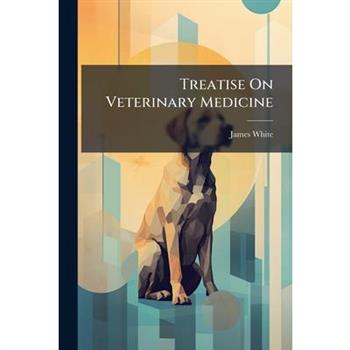

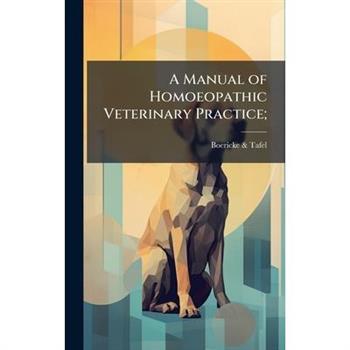
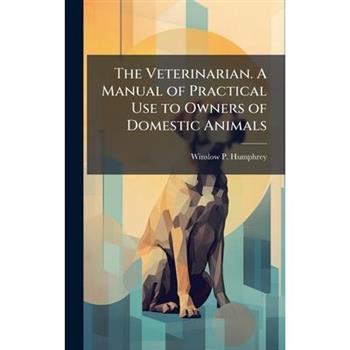
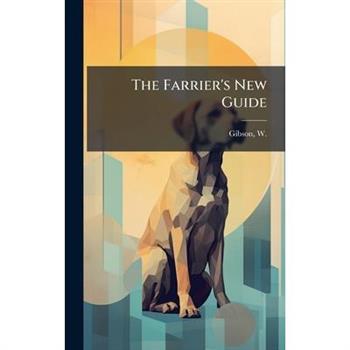
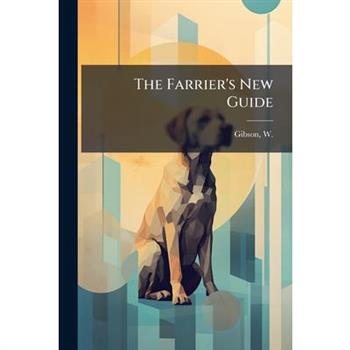


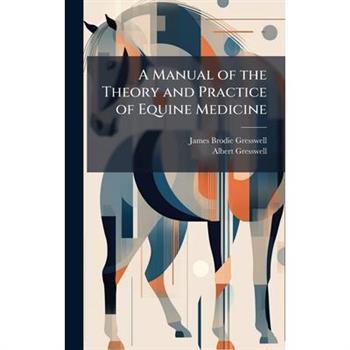
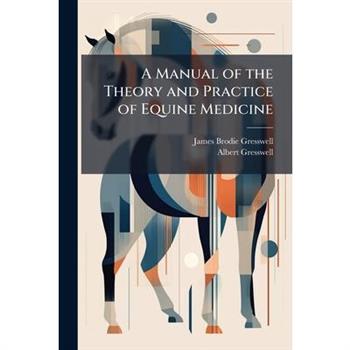

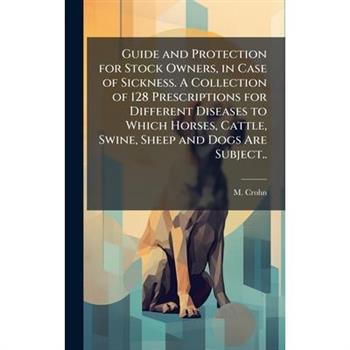
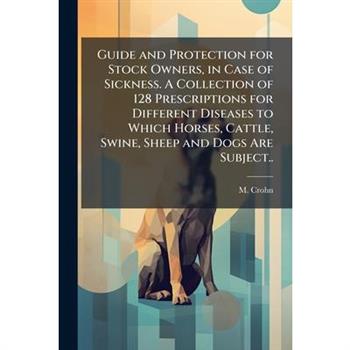

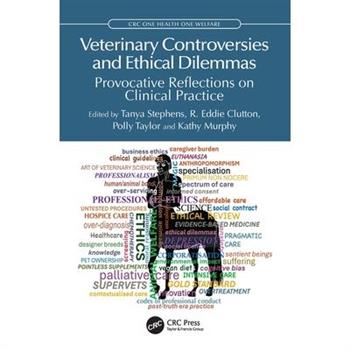





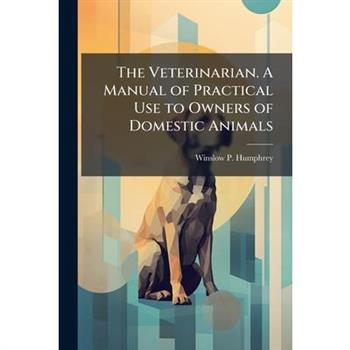

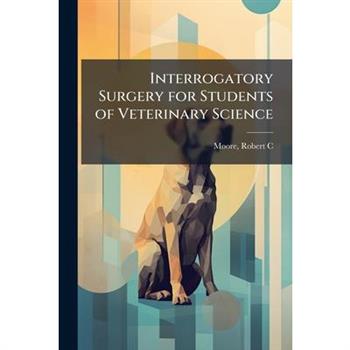


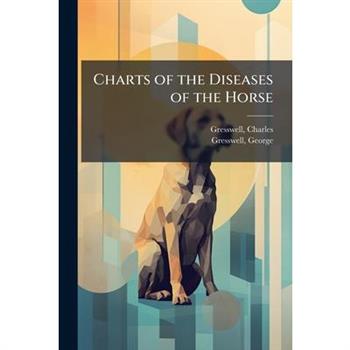


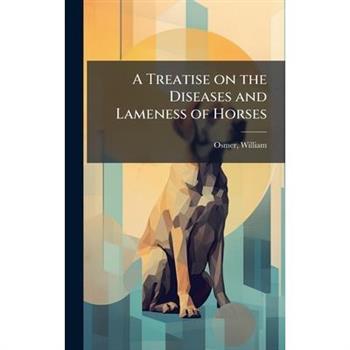
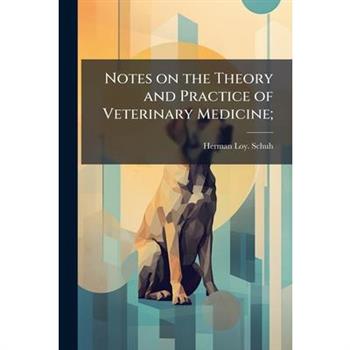
![The Only Vet-Approved Homemade Dog Food Cookbook You'll Ever Need [2 Books In 1] The Only Vet-Approved Homemade Dog Food Cookbook You'll Ever Need [2 Books In 1]](https://cdn.kingstone.com.tw/english/images/product/4818/9781990404818m.jpg?Q=5c71f)








